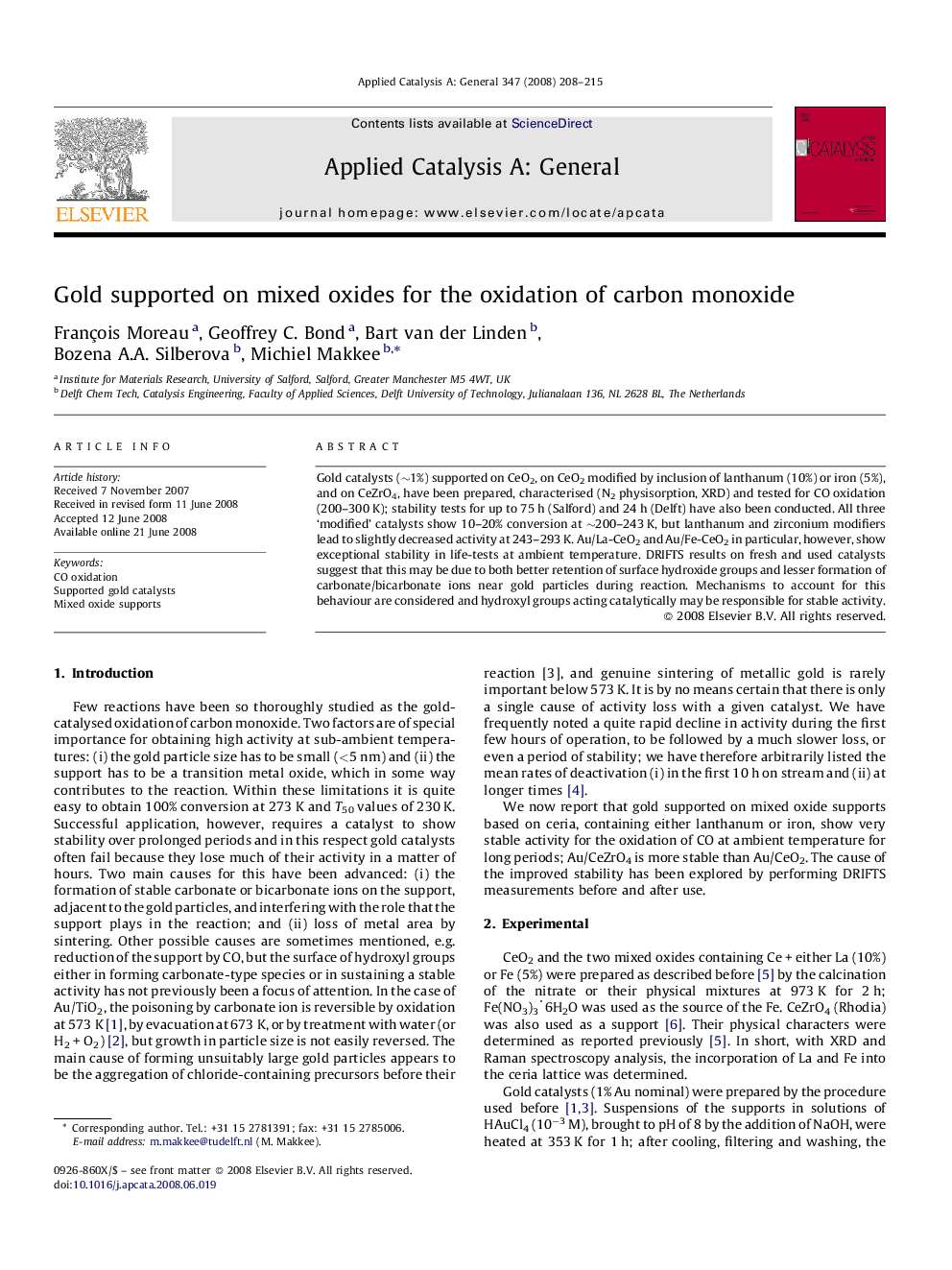| کد مقاله | کد نشریه | سال انتشار | مقاله انگلیسی | نسخه تمام متن |
|---|---|---|---|---|
| 42914 | 45946 | 2008 | 8 صفحه PDF | دانلود رایگان |

Gold catalysts (∼1%) supported on CeO2, on CeO2 modified by inclusion of lanthanum (10%) or iron (5%), and on CeZrO4, have been prepared, characterised (N2 physisorption, XRD) and tested for CO oxidation (200–300 K); stability tests for up to 75 h (Salford) and 24 h (Delft) have also been conducted. All three ‘modified’ catalysts show 10–20% conversion at ∼200–243 K, but lanthanum and zirconium modifiers lead to slightly decreased activity at 243–293 K. Au/La-CeO2 and Au/Fe-CeO2 in particular, however, show exceptional stability in life-tests at ambient temperature. DRIFTS results on fresh and used catalysts suggest that this may be due to both better retention of surface hydroxide groups and lesser formation of carbonate/bicarbonate ions near gold particles during reaction. Mechanisms to account for this behaviour are considered and hydroxyl groups acting catalytically may be responsible for stable activity.
Gold catalysts (∼1%) supported on CeO2, on CeO2 modified by inclusion of lanthanum (10%) or iron (5%), and on CeZrO4, have been prepared, characterised (N2 physisorption, XRD) and tested for CO oxidation (200–300 K); stability tests for up to 75 h (Salford) and 24 h (Delft) have also been conducted and Au/Fe-CeO2 in particular shows an exceptional stability in life-tests at ambient temperature. DRIFTS results on fresh and used catalysts suggest that this may be due to better retention of surface hydroxide groups.Figure optionsDownload as PowerPoint slide
Journal: Applied Catalysis A: General - Volume 347, Issue 2, 15 September 2008, Pages 208–215